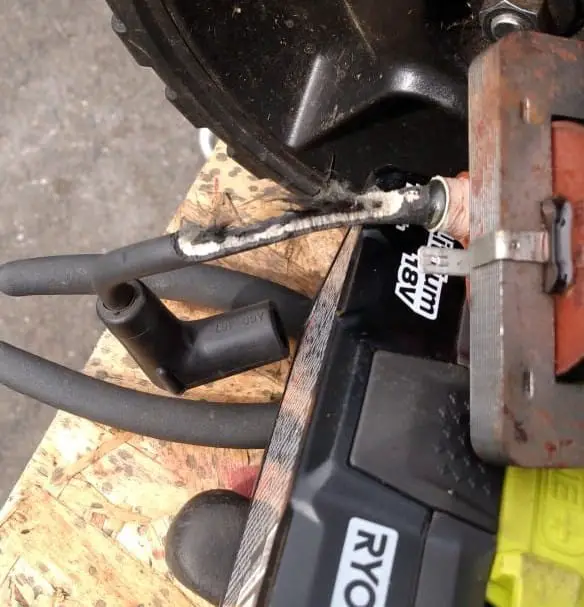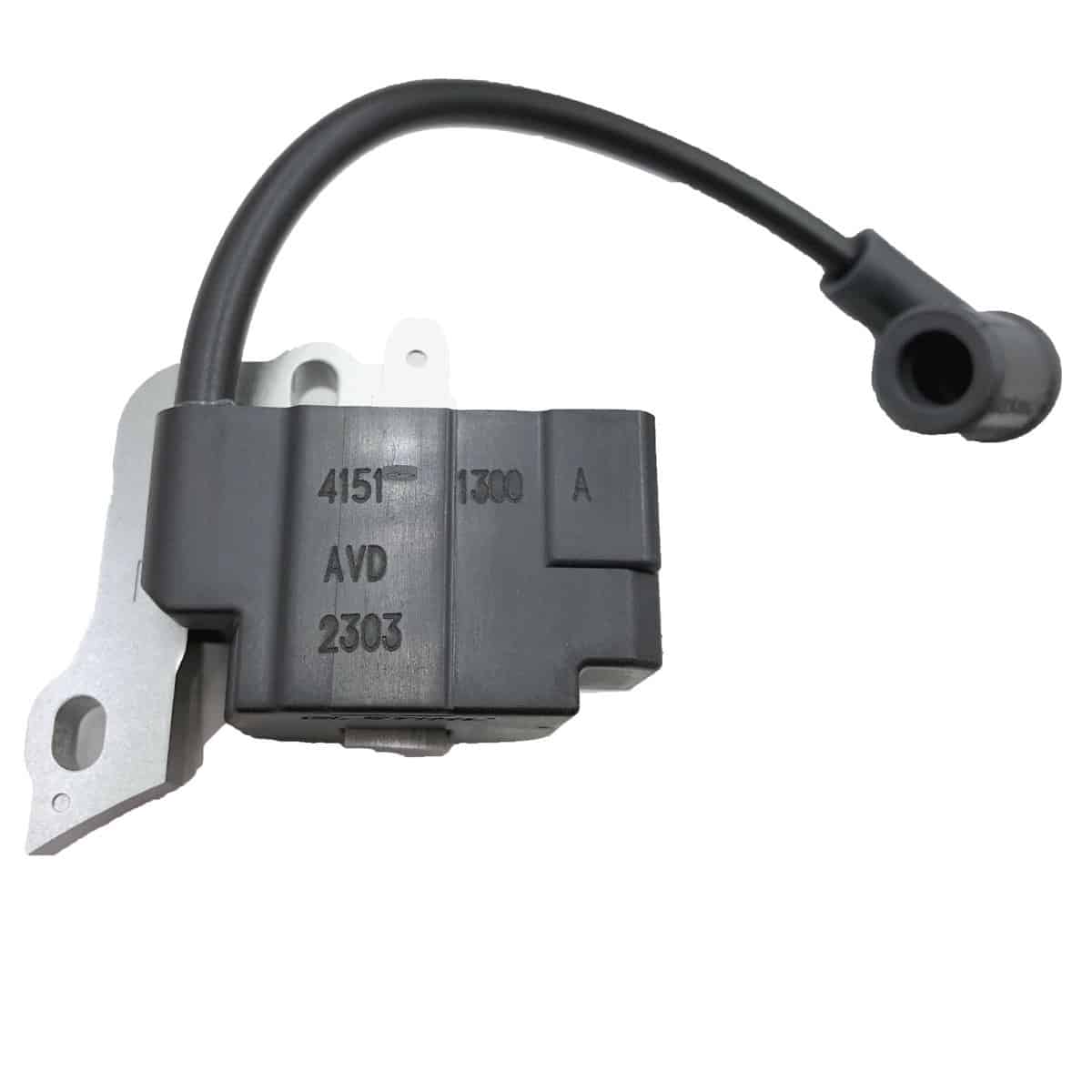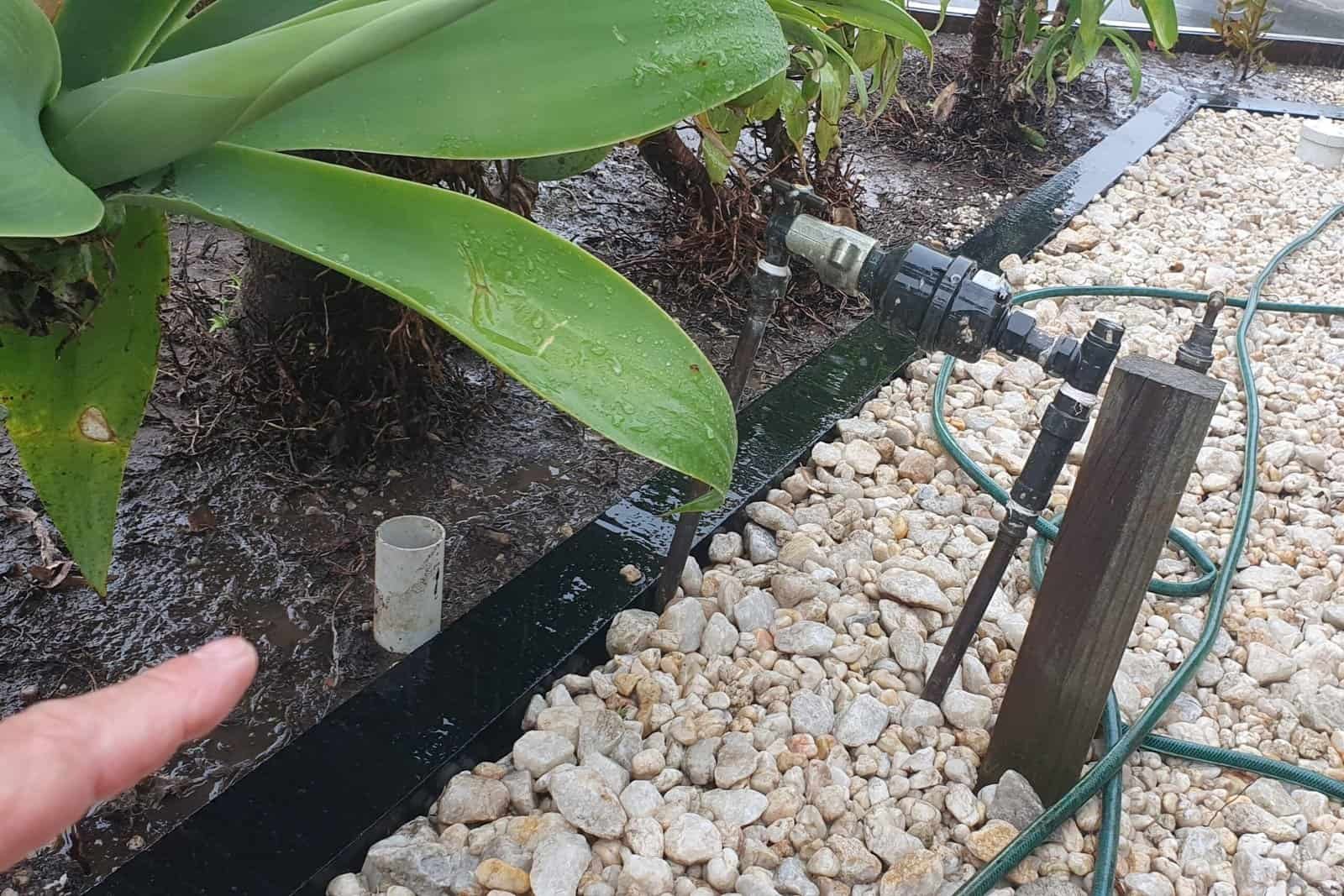Hi there!
You are ready to mow your beautiful lawn. Unfortunately, your lawn mower doesn’t spark up. So what causes the lawn mower coil good but no spark?
There are multiple causes for this issue. We will discuss them one by one and recommend the best solution for each case. Let’s get started!
Contents
Causes Of Lawn Mower Coil Good But No Spark
While your lawn mower coil is still good, it can’t spark because of the improper coil air gap, loose magnets, rusty flywheel, or faulty ground wire.
Coil Air Gap
The flywheel’s magnet passes by the coil, generating an electric charge that goes to the spark plug. For this process to work efficiently, the gap between the coil and magnet should be at the recommended distance.
You should adjust the gaps on both sides of the coil yoke to the suggested distance. The coil won’t create the needed electric charge if the yoke distance or the overall gap is wrong. Sometimes, it makes the spark plug keep fouling.
In simpler terms, if the settings are wrong, the coil can’t work. To check the gap, you can use a feeler gauge after checking the manual for the recommended coil air gap distance.
You can also measure the gap by sliding the feeler gauge between the flywheel magnet and the coil on your lawn mower. If it’s not correct, then adjust it.
Flywheel Magnets
As the flywheel spins, the magnet inside will pass by the coil. Over time, magnets may weaken, but it is not a significant concern for lawn mowers.
However, the magnets can become misplaced or loose, affecting the machine’s performance. So, it’s essential to check if they are in the correct position inside the flywheel.
You need to look at the flywheel to locate the magnets. The manufacturer should mark or polish them. Then, to test them, hold a metal object close to the flywheel. If you don’t see any attraction, you will need to solve this problem.

Corrosion of the Flywheel
Flywheels made of cast iron rust over time and will weaken the magnetism movement to the coil. This issue causes the coil to become non-functional.
To check for any corrosion, you can remove the cover of the lawn mower and inspect the flywheel.
Please note that this problem is not common in new lawn mower models. The alloy flywheels of such machines are rust-resistant.
Flywheel Ground/ Coil Ground
When you release the bail lever on the handlebar of your lawn mower, there will be a direct ground connection between the engine and the coil. The spark created by that interaction will stop the engine.
In this case, the bail lever is the switch to charge the engine or the spark plug. So if there’s a problem with the bail lever ground, the coil might remain constantly grounded.
To test the ground wire of the coil, please follow these steps:
- Detach the ground wire.
- Disconnect and remove the spark plug from the lawn mower.
- Attach the spark plug tester to the spark plug cable and the engine.
- Turn the engine over and check the light of the tester. If you see the light, the coil ground must be faulty. And if the tester doesn’t light, the coil can be the cause of the problem.
Solutions Of Lawn Mower Coil Good But No Spark
Your lawn mower coil may be good but doesn’t spark for four reasons. Here is how you deal with each case:
Gap the Coil
To adjust the gap of your coil, you’ll need a feeler gauge and a specific gap distance for the lawn mower. Then, follow these steps to fix it:
- Align the flywheel magnets with the coil, then insert the feeler gauge.
- Use a socket wrench to loosen the two bolts holding the coil to your engine. While performing this step, the magnet’s force will pull the coil towards the flywheel.
- Next, tighten the two bolts using the socket wrench.
- Remove your feeler gauge and spin the flywheel. Ensure the flywheel does not touch the coil.
Repair the Magnets
To fix loose magnets, you’ll have to remove the flywheel. The instructions are as follows:
- Use a socket wrench to unscrew the center nut at the top of the wheel.
- Remove the flywheel from the engine. Once you flip it, you will notice that the magnets have come loose.
- Apply a solid two-part glue to the contact side of the loose magnet and put it back on the flywheel.
- Let the glue set overnight to ensure it fully dries.
- When the glue has cured, put the flywheel back in place and tighten the center nut.
- Examine the coil gap and reassemble the rest of the mower.

Remove the Corrosion
If your flywheel is rusty, use sandpaper to rub the affected part. You don’t need to make it shine; just remove as much rust as you can.
Besides, remember to clean the components of your lawn mower regularly. Otherwise, they lead to several issues, such as the spark plug turning black or faulty blades.
Repair the Coil Ground
The coil ground wire is a short wire with connectors at both ends. One end links to the coil, while the other is on the bail lever.
To fix the ground wire, find the connector on the coil and disconnect it. Then, trace the wire back to locate the other end connected to the bail mechanism.
You may notice that the other end of the wire has a ring connector or just a connector. If it’s the ring one, remove the screw using a screwdriver.
After that, connect the new wire to the bail mechanism and the coil. It’s a quick fix, but a faulty wire can still cause a good coil to have no spark.
Conclusion
With the know-how to troubleshoot a lawn mower coil that’s good but lacks a spark, you can now confidently tackle this issue.
Now, grab your tools and follow our tips. You can enjoy the satisfaction of a perfectly mowed lawn.
Thank you for reading!





